The concept of "active space" as seen in the Sala Espressioni [Expression Room] in Milan
"Guido Ballo gave me the credit for the idea behind the Sala Espressioni. I will accept responsibility for the term expression, which I am fond of, but the idea actually came from Ideal Standard and its intention to make this exhibition in the heart of Milan not a static presentation of models but a dynamic hub cultural activity."
"Ideal Standard recognised the importance of both promoting its production and of a type of promotion that would bring prestige to the Ideal Standard name, showing that industry is not detached from the cultural expressions of an era. […] The Sala Espressioni experienced an initial period of adjustment but is beginning […] to attract growing interest and this tells us that "Espressioni" is not merely a Milanese cultural experience but also recognised abroad as a singular initiative. A major forthcoming event in the Ideal Standard Sala Espressioni of interest to the worlds of architects and culture is an exhibition of furniture by Le Corbusier, now to be manufactured in Italy by Cassina[…]" — Gio Ponti
Creating a cornice for sculptural works, how architecture, painting and sculpture relate to each other and how structure, decoration and function are linked — these are all issues that continue to suffer serious prejudice. Yet, the developments of Expressionism and Constructivism should have made it clear that the concept of sculptural cornice calls for a total revision of the significance of "decoration". The relationship between structure and decoration acquires new meanings when space is critically no longer seen as neutral but active.
![Domus 428 / July 1965 page details. View of Milan's Ideal Standard <em>Sala Espressioni</em> [Expressions Room]. Top and above: view of Ettore Sotssass' <em>Espressione</em>, in collaboration with Albert Leclerc Domus 428 / July 1965 page details. View of Milan's Ideal Standard <em>Sala Espressioni</em> [Expressions Room]. Top and above: view of Ettore Sotssass' <em>Espressione</em>, in collaboration with Albert Leclerc](/content/dam/domusweb/en/from-the-archive/2012/08/18/ideal-standard-s-expression-room/big_391377_5577_2a17.jpg.foto.rmedium.jpg)
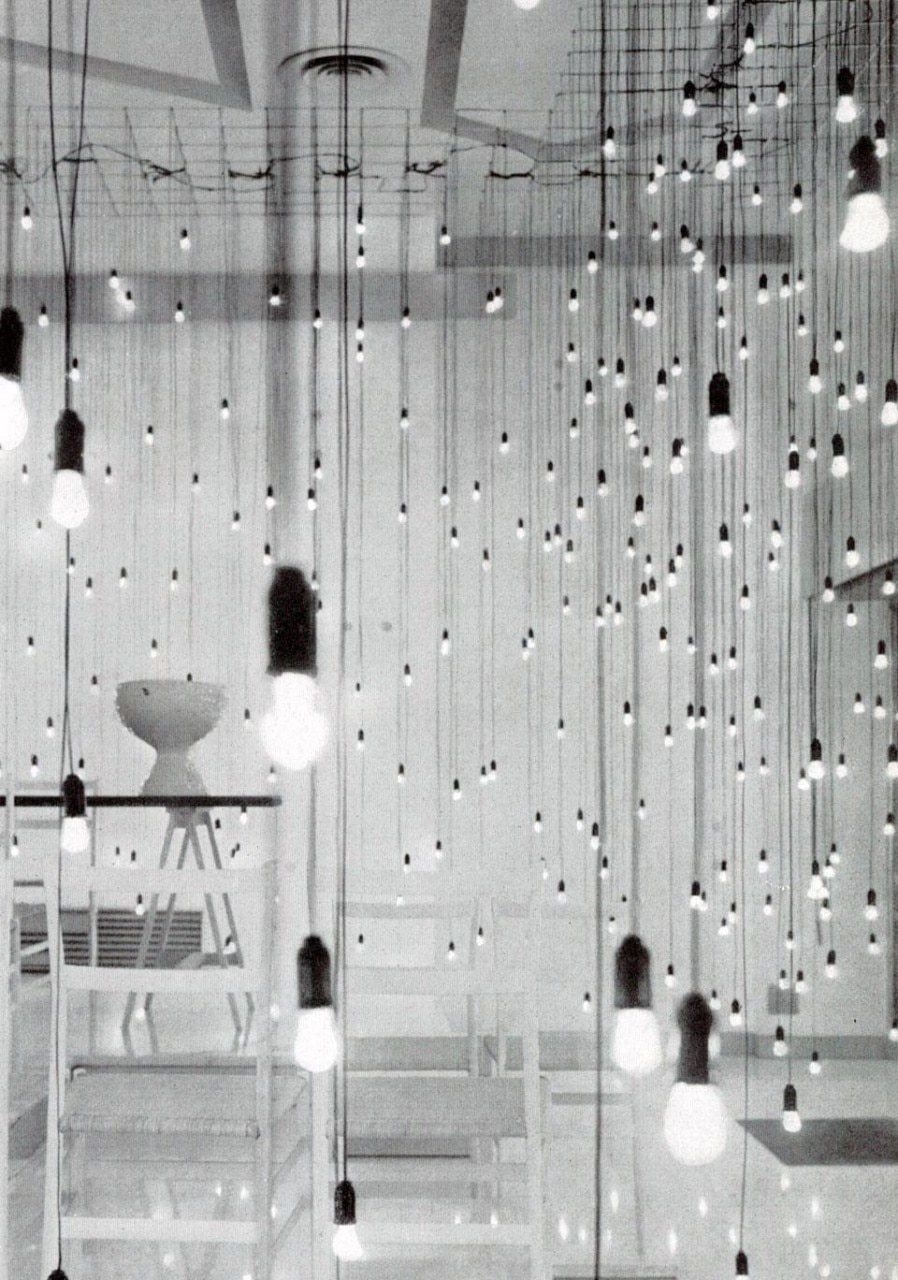
A number of exhibitions have been held over two years but, and this is key, they are not the usual kind of exhibition, with studio pictures and sculptures. They are events in which the spatial relationship between the architecture, sculpture and graphic art is resolved in a new and unitary manner. Of course, not all these exhibitions responded to this criterion of placing new functional decoration in an active space.
The series started in November 1963 with reliefs by Enrico Ciuti, in an example of art that has an interior and architectural function, and is resolved in a modulated rhythm of the spaces
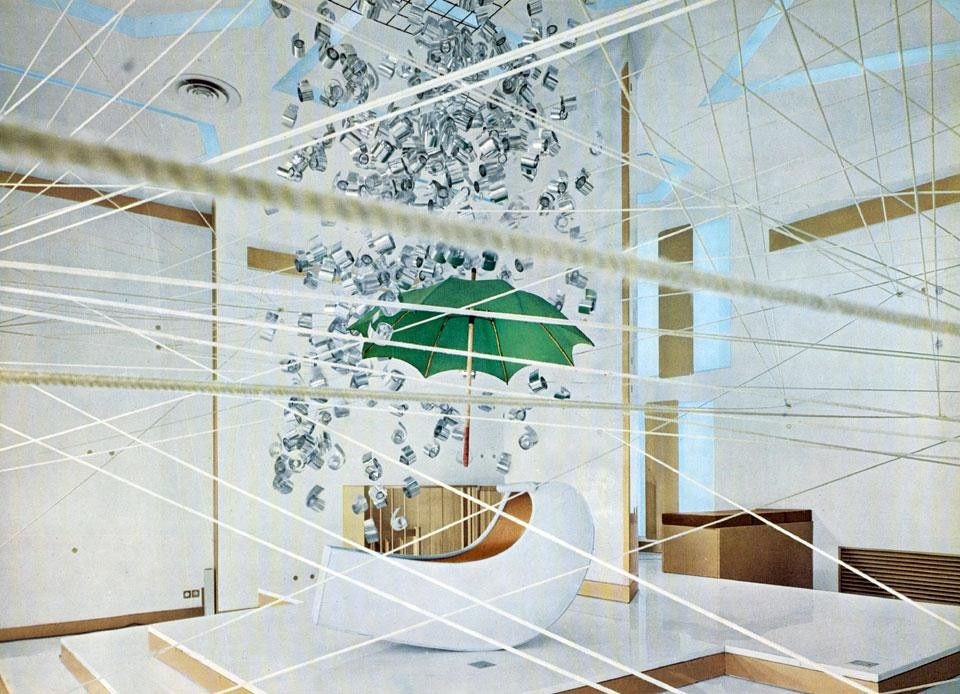
As a whole, however, […] it is the only new proposal for decoration and, as such, is to be praised because, as already mentioned, it is a hugely interesting issue. […] The series started in November 1963 with reliefs by Enrico Ciuti, in an example of art that has an interior and architectural function, and is resolved in a modulated rhythm of the spaces. As it was the first exhibition, Ciuti's individual pieces and Gio Ponti's architecture remained distinct from each other, standing separately alone, but already the problem of a new concept of decoration in an active space emerged clearly with Ciuti's works as, given his lengthy graphic experience, all his art tends to relate to the surroundings. The next and second event was Bruno Munari's L'arte programmata [The programmed Art]. He managed to create an inspired "kinetic object", especially for the Ideal Standard space, that moved with the slightest puff of air and was a consistent development of Constructivism, creating the effect of active spatiality.
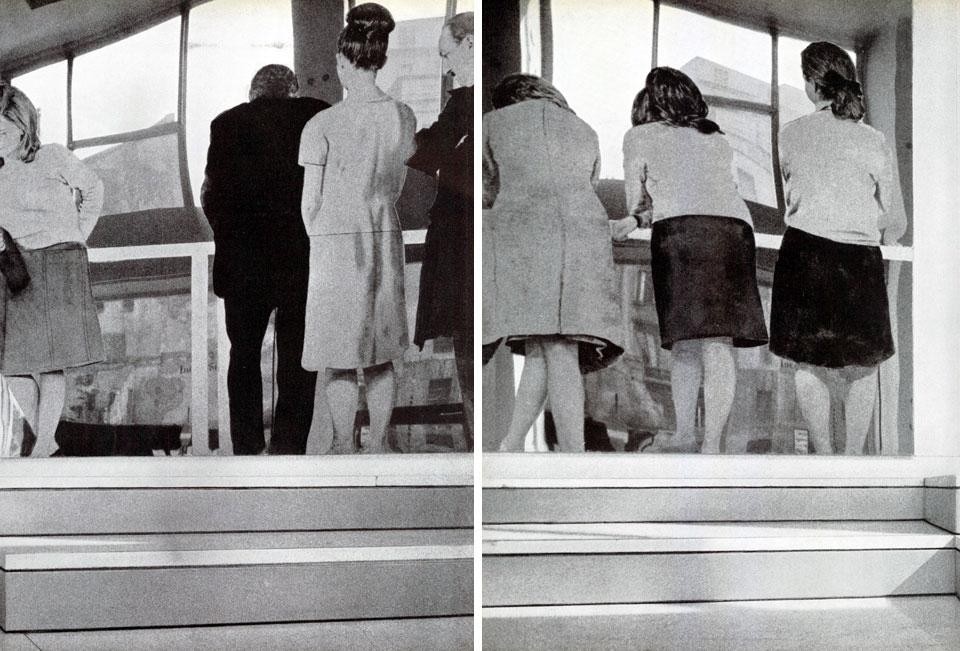
Tomonori Toyofuku, Masanao Uematsu and Aoi Kono's Elementi in uno spazio [Elements in one space] also responded to the need for active space but with a different, more Oriental, linguistic substance entrusted to the cerebral impact of a mobile that was a tangle of intersecting straight lines. They did so with rhythms reminiscent of Japan, their home country, and allusive symbols verging on the magical and a mood suspended in colour, all despite being involved in the most international trends of the century such as Constructivism and semantic development.
Of course, Gio Ponti's unreal Espressione [Expression], the fifth in the series, was more consistent with the cornice than all the others. This time, the architecture of the room was in total harmony with the rhythmic invasion of the forms, an architectural variant that made the space all the more active with pure rhythm and references to bare space, on which the colours, in the most simple contrasts, made a wonderful impact. In these forms, the concept of decoration became functional, breaking through the confines of added ornament without tending towards the aggressive expression of metaphysical origin, in which restraint becomes fanciful inventiveness.
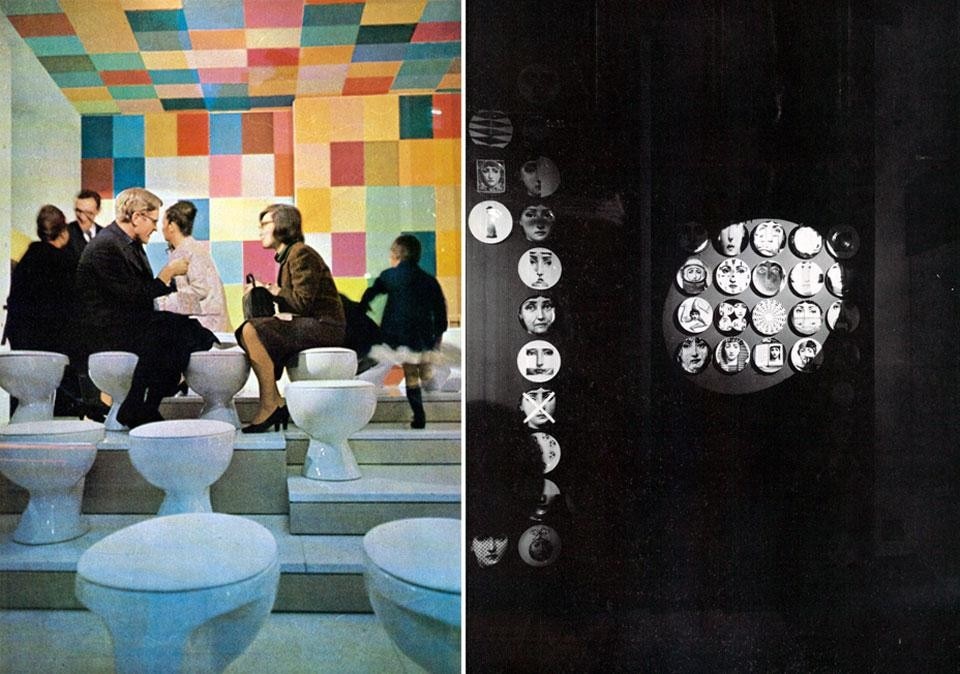
Then came Fornasetti's Espressione, 250 variations on a woman's face. The overall effect this time was still spatial, you could not admire a single piece isolated from the surroundings but there was no unity between the space of the single pieces and that of the whole room. Basically, it was like the fun and attractive arrangement of a large shop window. […] By contrast, Emanuele Ponzio's Espressione took us back to the display of a mass-produced "design" object from the Ideal Standard production featuring combinations and multiplications of the same piece, detached from its function, highlighting the formal impact of the object itself, with some dynamic colour effects added by an aluminium "mobile" in the centre of the room. […]
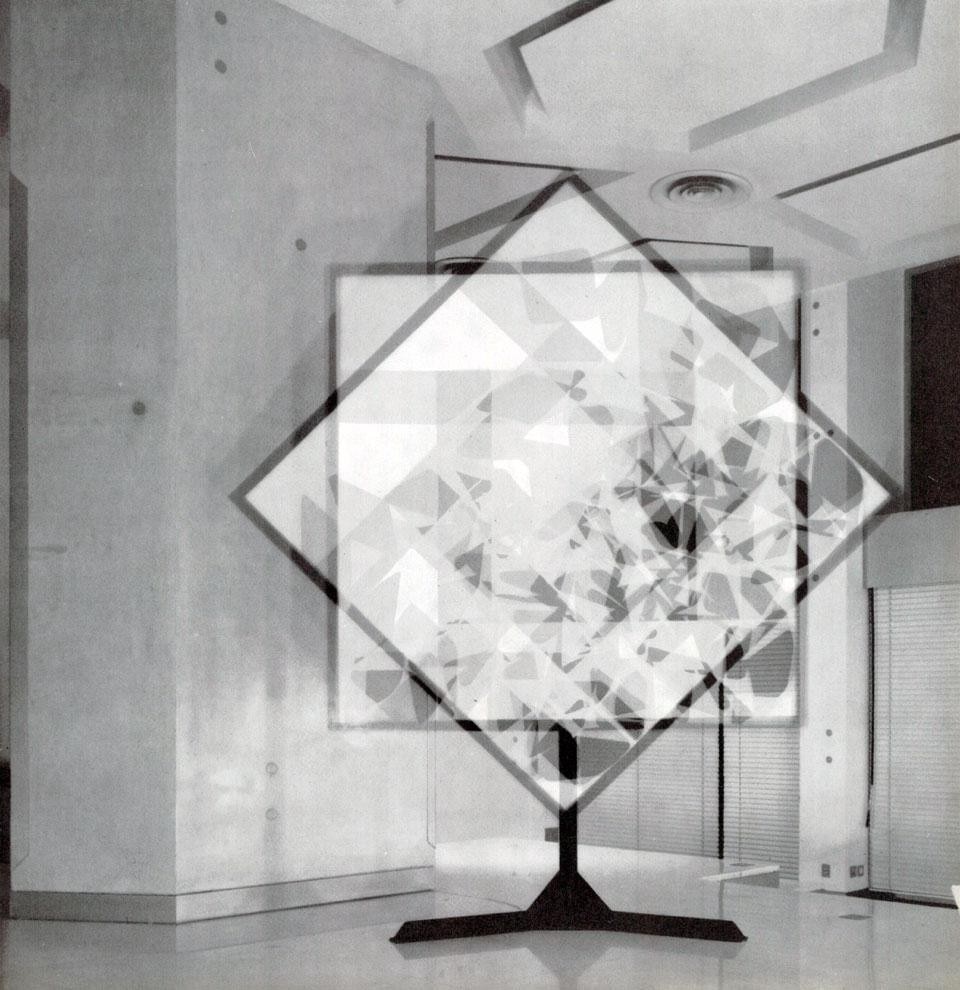
The installation of these large surfaces, certainly fascinating in terms of their expressiveness, did not involve a new architectural relationship and so there was no new solution to the concept of active decoration. Yet, Pistoletto's mirror images can pursue a decorative cornice in the sense already mentioned.
Ettore Sottsass was, by contrast, an architect, designer and painter. It was only natural that his Espressione […]tended towards the environmental situation with structures featuring moving rhythms, lights and colours in an active space — a contrivance of effects in an imaginatively invented cornice and, most importantly, with syncopated and lucid musical analogies alluding to the wonder and, albeit amused, obsession of today's life. It was one of the finest events in the Ideal Standard room.
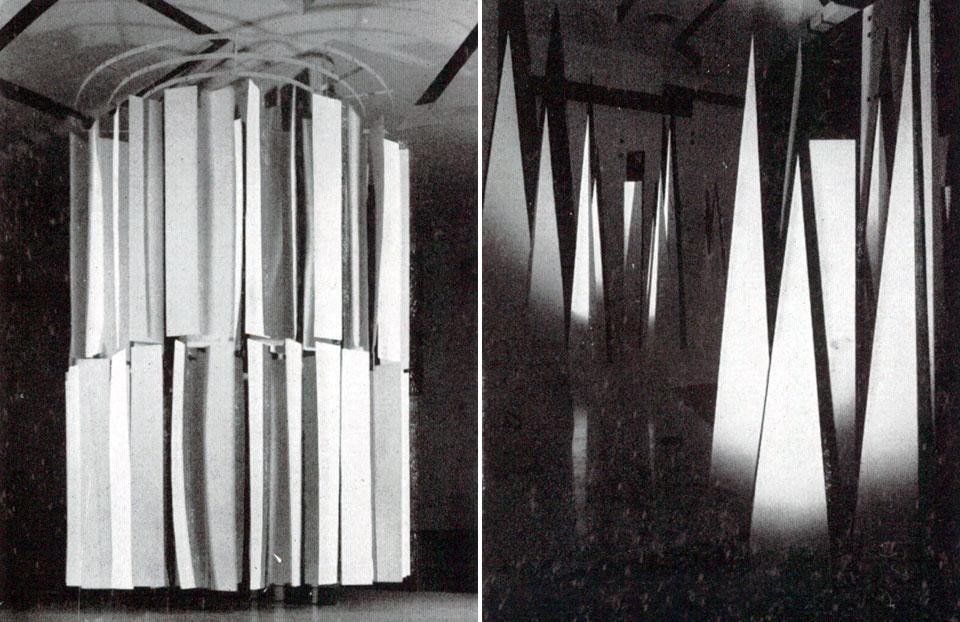
Last comes a new "expression" — in their lively cornice, the "large windows" designed by Gio Ponti with Toni Zuccheri for Venini produced stunning coloured light effects, showing that coloured glass can beautifully illuminate all its surroundings. This second cycle ended in July with an Espressione by Piero Bolla, Lorenzo Griotti and Sergio Anelli consisting in "sculptural bodies". […] Events by Lucio Fontana, Nanda Vigo, Paolo Tilche, Enrico Castellani and Paolo Scheggi are already scheduled for the next season. […] Guido Ballo


